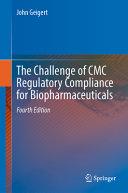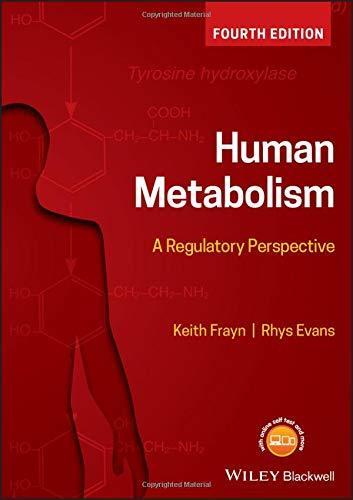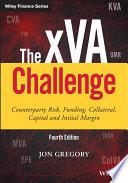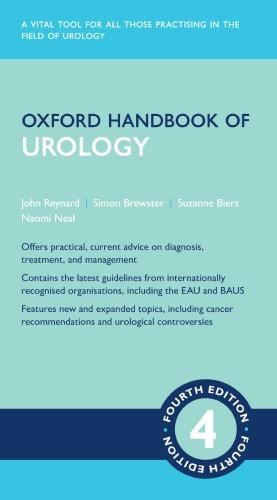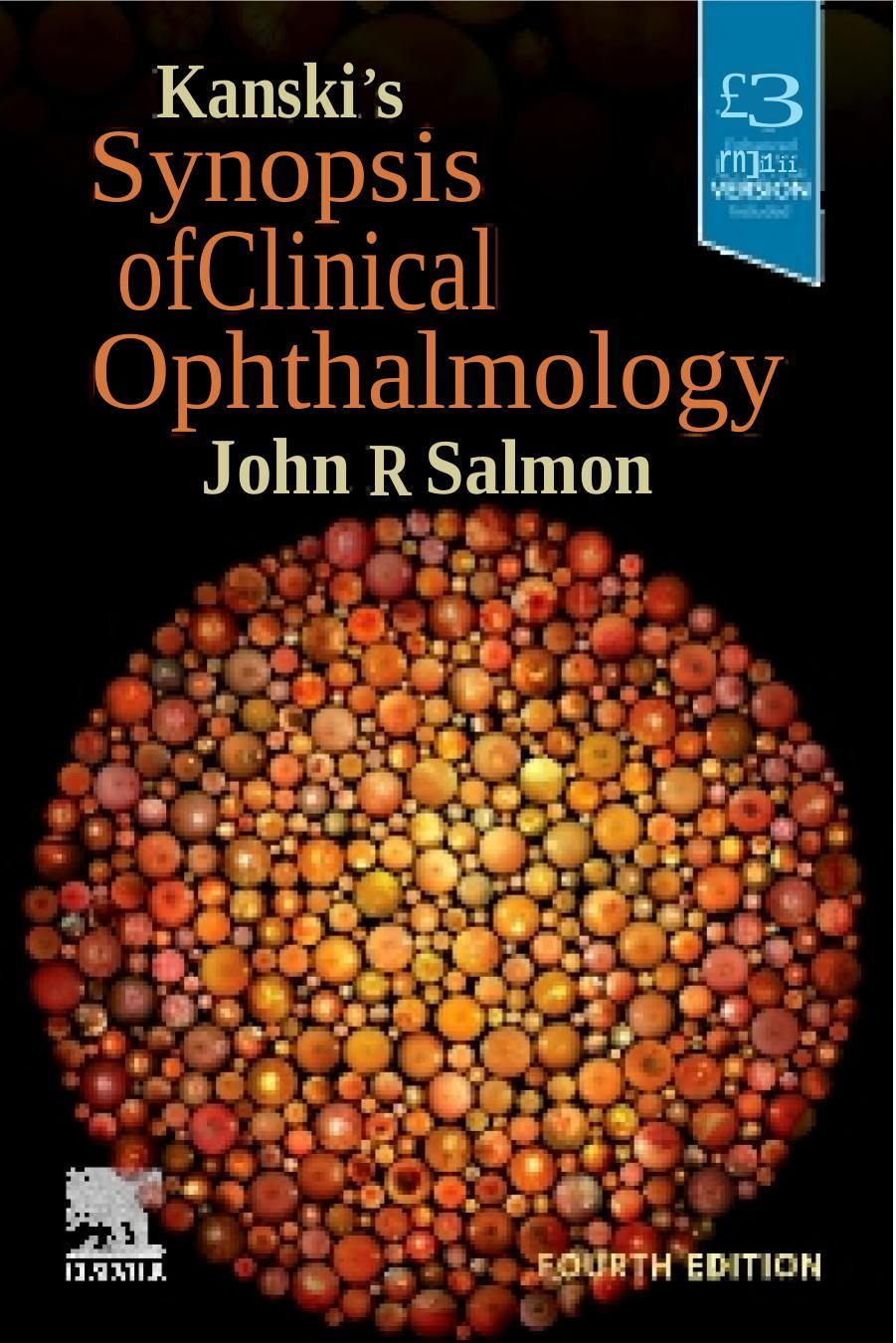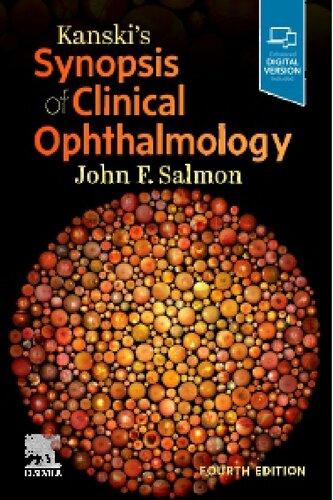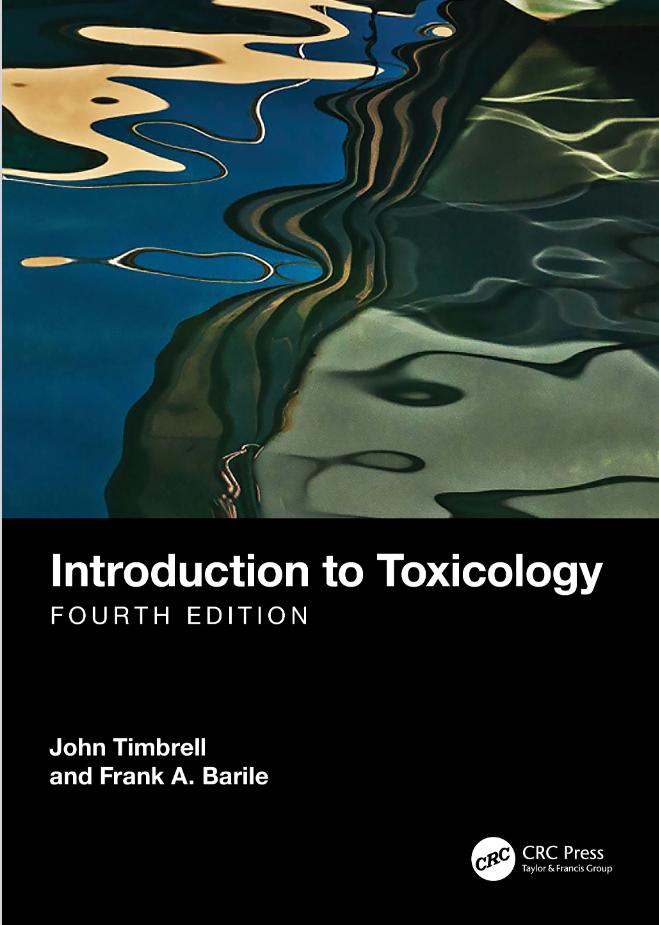The Challenge of CMC Regulatory Compliance for Biopharmaceuticals
Fourth Edition
John Geigert BioPharmaceutical Quality Solutions
Carlsbad, CA, USA
ISBN 978-3-031-31908-2 ISBN 978-3-031-31909-9 (eBook) https://doi.org/10.1007/978-3-031-31909-9
© The Editor(s) (if applicable) and The Author(s), under exclusive license to Springer Nature Switzerland AG 2004, 2013, 2019, 2023
This work is subject to copyright. All rights are solely and exclusively licensed by the Publisher, whether the whole or part of the material is concerned, specifcally the rights of translation, reprinting, reuse of illustrations, recitation, broadcasting, reproduction on microflms or in any other physical way, and transmission or information storage and retrieval, electronic adaptation, computer software, or by similar or dissimilar methodology now known or hereafter developed.
The use of general descriptive names, registered names, trademarks, service marks, etc. in this publication does not imply, even in the absence of a specifc statement, that such names are exempt from the relevant protective laws and regulations and therefore free for general use.
The publisher, the authors, and the editors are safe to assume that the advice and information in this book are believed to be true and accurate at the date of publication. Neither the publisher nor the authors or the editors give a warranty, expressed or implied, with respect to the material contained herein or for any errors or omissions that may have been made. The publisher remains neutral with regard to jurisdictional claims in published maps and institutional affliations.
This Springer imprint is published by the registered company Springer Nature Switzerland AG The registered company address is: Gewerbestrasse 11, 6330 Cham, Switzerland
Preface
Preparing the fourth edition of my book was again a most humbling experience for me. My primary purpose for updating the previous edition was to continue to provide relevant insight and practical suggestions for a common sense, cost-effective, risk-managed approach to meeting the Chemistry, Manufacturing and Controls (CMC) regulatory compliance requirements and expectations for biopharmaceuticals as human medicinal products. But the scope of this approach was almost overwhelming as there was so much that could not be included in this latest updated edition. I trust that my choices will be of the most beneft to the upcoming next generation of Project Management, Process Development, Manufacturing, Analytical Development, Quality Control, Quality Assurance, and Regulatory Affairs staff who take responsibility for ensuring the quality, effcacy, and safety of these biopharmaceutical medicines for patients.
So many changes continue in the advancement of the protein-based biopharmaceuticals. Over 250 recombinant proteins, monoclonal antibodies, bispecifc antibodies, fusion proteins, antibody Fab and Fc fragments, antibody-drug conjugates (ADCs) are now in the marketplace in both the United States of America (USA) and European Union (EU). And not to forget that over 80 biosimilars are also now available across all major classes of off-patent recombinant proteins and monoclonal antibodies.
The increasing entrance into the marketplace over the past 5 years of the gene therapy-based biopharmaceuticals. Using genetically engineered viruses, genes (DNA) are delivered either directly to the patient or to collected patient cells that then get administered back to the patient, so that the patient becomes the “bioreactor” producing the needed protein product. About 20 gene therapy-based biopharmaceuticals are now market-approved, with an estimate of about 10 new therapies to be approved every year going forward.
Another measure of the rapid degree of change occurring in the biopharmaceutical feld is refected in over 400 CMC regulatory compliance references listed in this book that were either issued or updated since the release of the last edition.
I am indebted to two major regulatory authorities: the United States Food and Drug Administration (FDA) and the European Medicines Agency (EMA). These
two regulatory authorities publish on their websites an abundance of CMC regulatory guidances (recommendations and expectations) to help the developing and changing biopharmaceutical industry. In addition, they both upload (after a biopharmaceutical medicine is market-approved) discussions, reviews, and meeting minutes during the biopharmaceutical review process, thus providing insights into how the regulatory authority currently views the current application of manufacturer’s biopharmaceutical CMC regulatory compliant strategy. Many of the references listed in this book are from this information that is readily downloaded from their websites. Thanks also goes to the International Council of Harmonisation (ICH), in their harmonizing of consensus CMC guidelines. ICH has issued harmonized CMC guidelines not only for the content to be included in biopharmaceutical submissions seeking market approval (e.g., for viral safety evaluation, comparability of biopharmaceuticals after a manufacturing process change, etc.) but also for the strategic control for the complex biopharmaceutical manufacturing processes (e.g., for pharmaceutical development, quality risk management, pharmaceutical quality system, etc.). While the initial focus for ICH was on the protein-based biopharmaceuticals, as their guidances are updated, aspects for the gene-therapy biopharmaceuticals are being included. The ICH regulatory guidelines have driven the biopharmaceutical industry to a higher standard of manufacturing excellence and quality control, introducing the principles of Quality by Design (QbD), Quality Risk Management (QRM), Pharmaceutical Quality Systems (PQS), Knowledge Management (KM), Established Conditions (EC), and Post-Approval Change Management Protocols (PACMPs). It is for this reason that I have provided the FDA, EMA, and ICH website locations (listed at the end of each chapter) for the many regulations, guidance documents, and case examples that I have used in the preparation of this book.
Expediting clinical pathways have shortened the time in clinical development –Breakthrough Therapy designation (BTD) and Regenerative Medicines Advanced Therapy (RMAT) designation in the USA; PRIME (PRIority MEdicine) designation in the European Union. This shortening of the clinical study time from First-inHuman (FIH) entry studies to market approval (estimated to be at least a 2–3 year savings) has placed great demands upon the CMC regulatory compliance strategy with ever-decreasing time to complete all of the required development, optimization, validation, site changes, etc. for the challenging biopharmaceutical manufacturing processes and complex products. This enhanced pressure on the CMC teams has not gone unnoticed by the regulatory authorities and they are keenly aware of the potential delays in biopharmaceutical product market approval that now can be due to CMC issues. Discussion on how to effectively manage the CMC regulatory compliance strategy under clinical expedited pathways is provided in this book.
Thanks also go to the companies who stumbled in their CMC regulatory compliance strategy, resulting in delay or rejection of their biopharmaceutical, so that we can learn from their mistakes. At times, an effective CMC regulatory compliance strategy can seem like a mystery. Sometimes this mystery is self-induced in our companies, when the CMC team is not aware that an effective CMC regulatory
compliance strategy can be at hand. Through means of this fourth edition, I want to show clearly the “good news” that CMC regulatory compliance no longer has to be a mystery. But I also want to caution against the “bad news” that there can be too much CMC regulatory compliance information available, “an information overload.” This is where this book becomes invaluable (along with the help of a good CMC consultant of course) in sifting through all of the public guidance available to determine which pieces are relevant for each specifc biopharmaceutical manufacturing processes and product types. To reinforce that no commercial proprietary information is revealed in this book, I have provided internet website addresses for the comments on the various companies and their CMC biopharmaceutical issues, mentioned in this book.
Throughout this book, I use the terms “biologic” or “biological” whenever I am discussing CMC issues that apply across the board to pharmaceuticals that are (1) derived from living organisms, (2) have challenging manufacturing processes, and (3) are complex products. But, I use the terms “biopharmaceutical” or “recombinant DNA-derived” whenever I am discussing CMC issues specifc for biologics manufactured from genetically engineered living organisms.
In Chap. 1, defning the terminology used in CMC regulatory compliance of biopharmaceuticals is paramount to being able to effectively communicate not only throughout our industry but also with the regulatory authorities. Also, the increasing diversity of biopharmaceutical product types is unveiled, with a discussion of the four major “waves” of product types that have entered the marketplace from the early 1990s through today. Today, there are the protein-based biopharmaceuticals (the recombinant proteins and the monoclonal antibodies) and there are the everincreasing number of gene therapy-based biopharmaceuticals (the viral vectors and the genetically modifed patient cells). In addition, a non-viral vector (mRNA) is now being pursued in the clinic. Time will tell how abundant these human patient “bioreactors” will become. In Chap. 2, the various regulatory pathways for initiating a clinical trial, for maintaining the clinical trial during its development and then for seeking market approval for biopharmaceuticals, is examined, within the USA and European Union regions. Differences in the regulatory pathways are discussed. In Chap. 3, biopharmaceuticals are shown to be defnitely different from chemical drugs. This is not a perception, but a reality, and it is refected by the statements on regulatory authority websites and in the wording of the regulatory guidances that they issue. Differences due to starting materials, differences due to the ability to control the manufacturing process, and differences due to the molecular complexity of the products are examined across four product types. Avoidance of the word “biogeneric” for biosimilars is discussed. In Chap. 4, why the risk-based approach is absolutely necessary to effectively manage the minimum CMC regulatory compliance continuum, due to the challenge in manufacturing and complexity of the resulting biopharmaceuticals, is examined. The ICH-recommended risk-based approach for biopharmaceuticals – Quality by Design (QbD)/Quality Risk Management (QRM) – is also discussed and shown to be an invaluable tool for establishing and
maintaining adequate and appropriate control for all biopharmaceutical types. In Chap. 5, the four primary adventitious agents of concern for biopharmaceuticals are examined in detail – prions, viruses, mycoplasma, bacteria/fungi. While each manufacturing process type has a different level of risk due to adventitious agent contamination, there is no biopharmaceutical manufacturing process that carries no risk of adventitious agent contamination. In Chap. 6, the signifcant differences between the starting materials for the protein-based biopharmaceuticals (Master Cell Bank) and the many starting materials for the gene therapy-based biopharmaceuticals (i.e., the viral vectors, transduced patient cells, mRNA non-viral vector) are evaluated. A problem here can carry all the way through the manufacturing process to the fnal administered biopharmaceutical product. In Chaps. 7 and 8, the risk-based requirements and expectations for an adequate and appropriate design and control of the biopharmaceutical drug substance manufacturing stages are examined. Similarities and differences between what is expected and what is doable for the drug substance manufacture, across the four types of biopharmaceuticals (recombinant proteins and monoclonal antibodies, viral and non-viral vectors, and genetically modifed patient cells), are compared and contrasted. In Chap. 9, the risk-based requirements and expectations for an adequate and appropriate design and control of the biopharmaceutical drug product manufacturing stages – formulation, container closure, and aseptic processing of flling/sealing – are examined. Sometimes between the purifed drug substance and formulation, the drug substance is conjugated (e.g., antibody-drug conjugates, PEGylation). In Chaps. 10 and 11, compared to chemical drugs, biopharmaceuticals have a large, complex biomolecular structure, seemingly endless structural variants, and, in addition, a highly complex process-related impurity profle, primarily due to the use of living systems involved in their manufacturing process. The challenges for the physicochemical and functional characterization of the different biopharmaceutical types – recombinant proteins, monoclonal antibodies, genetically engineered viruses, genetically engineered cells, mRNA nonviral vector – are examined, along with the use of a risk-based approach for process-related impurity control (and hopefully reduction or removal through the purifcation process). In Chap. 12, it is shown that because of the size and complexity of a biopharmaceutical functional/therapeutic activity, assays are required for strength/ potency measurement. In this chapter, the three types of functional activity assays for measuring potency are examined: bioassay, surrogate, and assay matrix. In Chap. 13, the seven major categories of Critical Quality Attributes (CQAs) are explored. Specifc testing to meet the requirements of each of these quality attributes, for each biopharmaceutical type, is discussed. In Chap. 14, the art of specifcation setting for biopharmaceuticals is examined – both for the release of batches and for setting the shelf-life. The use of a risk-based approach to set the limits or ranges through clinical development and into market approval for a
biopharmaceutical is discussed. The concept of an interim regulatory specifcation for a to-be-marketed biopharmaceutical, especially when so few batches are available today to statistically set specifcations, is explored. In Chap. 15, the three riskbased concerns that need to be addressed by an effective comparability study are examined. Demonstrating comparability for a biopharmaceutical after a manufacturing process change is no easy task, whether it be for a recombinant protein, monoclonal antibody, viral vector, or genetically modifed patient cells. In Chap. 16, the critical importance of communicating with the regulatory authorities on the CMC regulatory compliance strategy is stressed. Finally, in this chapter, an encouragement is given to senior management to take advantage of CMC-focused meetings available with the regulatory authorities.
CMC regulatory compliance strategy does not determine the direction of the clinical development program; its primary purpose is to support it, but that does not mean that we in CMC should avoid the tough decisions that scientists must make when advancing the applications of genetic engineering toward human. Francis S. Collins, the former Director of the United States National Institutes of Health (NIH) and the Human Genome Project (HGP) laid out this thought for all to consider [1]:
Is the science of genetics and genomics beginning to allow us to “play God”? That phrase is the one most commonly used by those expressing concern about these advances, even when the speaker is a nonbeliever. Clearly the concern would be lessened if we could count on human beings to play God as God does, with infnite love and benevolence. Our track record is not so good. Diffcult decisions arise when a confict appears between the mandate to heal and the moral obligation to do no harm. But we have no alternative but to face those dilemmas head-on, attempt to understand all of the nuances, include the perspectives of all the stakeholders, and try to reach a consensus. The need to succeed at these endeavors is just once more compelling reason why the current battles between the scientifc and spiritual worldviews need to be resolved – we desperately need both voices to be at the table, and not to be shouting at each other.
Learning never ceases in the area of biopharmaceutical CMC regulatory compliance strategy. After 40 years in the biopharmaceutical industry, I would have thought by now that there would be “nothing new under the sun” to learn. But I am constantly amazed at the energy and creativity by my colleagues continually developing new manufacturing process technologies and new product types, which demand challenging CMC strategies to effectively manage and ensure their regulatory compliance. It is my sincere desire that this book will be of help to those who work in these biopharmaceutical companies both today and for years to come. I encourage the users of this book to seek to learn more on their own about CMC regulatory compliance strategy for biopharmaceuticals.
Carlsbad, CA, USA
John Geigert
1. Collins FS. The language of god – a scientist presents evidence for belief. Free Press/Simon & Schuster, Inc; 2007.
Photo courtesy of Nicki Geigert Photography
Acknowledgments
Many colleagues during my 50 years of service in the biopharmaceutical industry have impacted my understanding of CMC regulatory compliance strategy and have indirectly contributed to the writing of this book. I would like to especially acknowledge my friends and colleagues at my former companies (all of which now have been acquired by larger biopharmaceutical companies and no longer exist as separate entities) – Cetus Corporation, Immunex Corporation, and IDEC Pharmaceuticals – for the insights and experiences that we shared. I would also like to acknowledge my new friends and colleagues in the many biopharmaceutical companies that I now serve as their consultant – for the many CMC regulatory compliance strategies that we wrestle with.
A special expression of appreciation goes to my wife, Nicki, who understood the time commitment and mental exhaustion that comes along with trying to update a book of this magnitude and for her patient support and strong encouragement again throughout this entire lengthy process.
Quoting from Albert Einstein, Nobel laureate in Physics, “The most beautiful thing we can experience is the mysterious. It is the source of all art and science. He to whom this emotion is a stranger, who can no longer pause to wonder and stand rapt in awe, is as good as dead; his eyes are closed.” I have been in awe watching my fellow scientists unravel the ever-increasing intricate complexity and design of life – carrying out genetic engineering on living cells to re-design them either to over-produce recombinant proteins or monoclonal antibodies or to become a living biopharmaceutical product itself such as a genetically engineered T-cell. As a scientist who believes that God is the ultimate genetic engineer, I trust that scientists will eventually comprehend and appreciate His original creative work.
Carlsbad, CA, USA
John Geigert
2.3.3
Terms: ‘Biologic’ and ‘Biological’
Terms: ‘Biopharmaceutical’ and ‘rDNA-Derived’
Terms: ‘ATMP’ and ‘CGTP’
5.4.3
5.5 Adventitious Bacteria/Fungi
5.5.1 Bacteria/Fungi Risk Assessment .
5.5.2 Bacteria/Fungi Risk Control
5.5.3 CMC Strategy Tip: Not All Discoveries Have Been Made Yet
5.6 ‘Not Detected’ Is Not Confrmation of Absence .
References
6 Starting Materials for Manufacturing the Biopharmaceutical Drug Substance
6.1 In the Beginning
6.2 Starting Material for Recombinant Proteins and Monoclonal Antibodies
6.2.1 Development Genetics – Steps Prior to Cell Banking
6.2.2 Importance of
6.2.3
6.2.4
6.2.5
6.2.6
6.2.7
6.3
7.3
Upstream Cell Culture Production of Recombinant
7.3.4 Meeting CMC Regulatory Compliance for Upstream Production
7.4 Upstream Production of Genetically Modifed Patient Cells .
7.4.1 Assembling the Transduction Process
7.4.2 Applying the Minimum CMC Regulatory Compliance Continuum
7.4.3 Meeting CMC Regulatory Compliance for Upstream Production
7.5 Upstream IVT Production of Non-Viral Vector (mRNA)
7.5.1 Assembling the Non-Viral mRNA Production Process
7.5.2 Meeting CMC Regulatory Compliance for Upstream Production
8.2
9.3 Formulation
9.3.1 Formulation of Recombinant Proteins & Monoclonal Antibodies .
9.3.2 Formulation of Gene Therapy Viral Vectors
9.3.3 Formulation of Genetically Modifed Patient Cells
9.3.4 Formulation of mRNA Non-viral Vector
9.3.5 Formulation Changes – Tread Carefully
9.4 The Container Closure System
9.4.1 Close Encounters Not Wanted: Product – Container-Closure Interactions
9.4.2 Applying the Minimum CMC Regulatory Compliance Continuum
11.3 Viral Vectors
11.3.1 Sources of Biomolecular Structural Variants
11.3.2 Issue of Empty Capsids
11.3.3 Applying the Minimum CMC Regulatory Compliance Continuum
11.4 Genetically Modifed Patient Cells
11.4.2 VCN – Not Too Much, Not Too Little
Applying the Minimum CMC Regulatory Compliance Continuum
13.5.2 Regulatory Guidance on Quantity
13.5.3 Measurement of Quantity
13.6 Safety
13.6.1 Safety from Adventitious Agents
13.6.2 Replication Competent Virus
13.7 General .
13.8 Compiled Tables of CQAs for Different Biopharmaceutical Types
13.8.1 FDA Released CQA Test Results
15.1.4 The Comparability Study Must Address Three Risk-Based Concerns .
15.2 Level of Risk Due to Stage of Clinical Development When Change Is Planned
15.3 Level of Risk Due to Nature (Type, Extent, Location) of Planned Process Change
15.3.1 Assigning Risk Levels to Proposed Manufacturing Process Changes
15.3.2 Risk Levels for Recombinant Proteins and Monoclonal Antibodies.
15.3.3 Risk Levels for Viral Vectors and Genetically Modifed Patient Cells
15.3.4 Established Conditions (ECs)
15.4 Level of Risk Due to Residual Uncertainty Still Remaining 517
15.5
List of Figures
Fig. 1.1 Amino acid sequence for the 51 amino acid recombinant human insulin
Fig. 1.2 Amino acid linear schematic for the 570 amino acid recombinant human Xenpozyme
Fig. 1.3 X-ray crystal 3-dimension structure of the 497 amino acid recombinant human Vpriv
Fig. 1.4 Two-dimensional schematic of the IgG monoclonal antibody
Fig. 1.5 Two-dimensional schematic of a bispecifc antibody
Fig. 1.6 Molecular schematic of some market-approved engineered antibody fragments.
Fig. 1.7 Molecular schematic of some commercial antibody-drug conjugates (ADCs) .
Fig. 1.8 FDA’s description of a biosimilar
Fig. 1.9 Manufacture of protein-based biopharmaceuticals (waves 1, 2, 3)
Fig. 1.10 Manufacture of gene therapy-based biopharmaceuticals (wave 4)
Fig. 1.11 Two main approaches to inserting gene therapy-base biopharmaceuticals into patients
Fig. 1.12 Schematic illustrating the structure of a recombinant AAV viral vector
Fig. 1.13 Schematic illustrating the anti-CD19 CAR transduced onto a T-cell
12
14
16
17
19
21
Fig. 2.1 The pharmaceutical regulatory system in the United States 33
Fig. 2.2 Regulatory drug development pathways in the USA
Fig. 2.3 The pharmaceutical regulatory system in the European Union
Fig. 2.4 Regulatory drug development pathway in the European Union
Fig. 3.1 Difference due to type of starting material across the four product types
Fig. 3.2 Difference due to inconsistency of manufactured product across the four product types
List of Figures
Fig. 3.3 Difference due to complexity of molecular structure across the four product types
Fig. 3.4 Illustration of size of recombinant proteins and monoclonal antibodies
Fig. 3.5 Linkage between manufacturing process and product across the four product types
Fig. 3.6 Comparison of studies for market-approval – innovator (reference) versus biosimilar
Fig. 4.1 Minimum CMC regulatory compliance continuum
Fig. 4.2 Three interactive CMC regulatory compliance components
Fig. 4.3 CMC Regulatory component
Fig. 4.4 cGMPs component
Fig. 4.5 Quality System component
Fig. 4.6 QbD/QRM risk-based approach .
Fig. 4.7 Quality target product profle (QTPP)
Fig. 4.8 Critical Quality Attribute (CQA)
Fig. 4.9 Critical Process Parameter (CPP)
Fig. 4.10 Determining a CPP versus a non-CPP by the degree of % CQA impact.
Fig. 4.11 Control Strategy (CS)
Fig. 4.12 Illustration of design space applied to an anion exchange chromatography step
Fig. 5.1 Risk mitigation/risk preparation/response recovery for a facility virus contamination 153
Fig. 6.1 Starting Materials: frst stage in the manufacture of the drug substance
Fig. 6.2 Schematic of the genetic construction process for a recombinant cell
Fig. 6.3 Schematic of the process of selecting a single recombinant cell for the MCB/WCB
Fig. 6.4 Threefold screening steps to select the desired clone
Fig. 6.5 Manufacture of the four starting materials for rAAV viral vector
Fig. 6.6 The three DNA plasmid starting materials for transient rAAV vector manufacture
Fig. 6.7 Transgene plasmid for Luxturna rAAV in vivo gene therapy
Fig. 6.8 Manufacture of the fve starting materials for rLV viral vector
Fig. 6.9 Manufacture of the linearized DNA plasmid starting material for mRNA production
Fig. 7.1 Upstream production: second stage in the manufacture of the drug substance
Fig. 7.2 Overview of upstream production processes for four types of biopharmaceuticals
Fig. 7.3 Schematic of fed-batch mode bioreactor operations
Fig. 7.4 Illustration of the recommended cell culturing conditions for genetic stability assessment
Fig. 7.5 Schematic of the viral vector upstream production process
Fig. 7.6 Schematic of the ex vivo transduction of patient cells process
Fig. 7.7 T cell selection from patient cells – before and after enrichment
Fig. 7.8 Schematic of manufactured mRNA viral vector
Fig. 8.1 Downstream purifcation: third stage in the manufacture of the drug substance
Fig. 8.2 Overview of downstream purifcation processes for four types of biopharmaceuticals
Fig. 8.3 Typical downstream purifcation process for IgG monoclonal antibodies
Fig. 8.4 Some typical CPPs for a downstream purifcation process for a monoclonal antibody
Fig. 8.5 Typical downstream purifcation process for rAAV viral vector . . . .
Fig. 8.6 Typical downstream purifcation process for mRNA non-viral vector
Fig. 9.1 Manufacture of the biopharmaceutical drug product 300
Fig. 9.2 Conjugation of recombinant proteins and monoclonal antibodies 301
Fig. 9.3 Drug-linker intermediate for manufacture of Trodelvy ADC
Fig. 9.4 Manufacture of Trodelvy ADC bulk drug substance 305
Fig. 9.5 Formulation stage in the drug product manufacturing process pathway 307
Fig. 9.6 Formulated bulk drug product in the drug product manufacturing process pathway 310
Fig. 9.7 Aseptic processing stage in the drug product manufacturing process 322
Fig. 9.8 Typical drug product manufacturing process for the four biopharmaceutical types 328
Fig. 10.1 Potential sources of process-related impurities in a biopharmaceutical process
Fig. 10.2 Illustration of the ELISA test method for residual host cell proteins
Fig. 11.1 Potential sources of biomolecular structural variants in a biopharmaceutical process 383
Fig. 11.2 N-glycan profles of two market-approved highly similar trastuzumab mAbs
Fig. 11.3 Site of disulfde scrambling in the Fc-fusion protein etanercept
Fig. 12.1 A cell proliferation inhibition cell-based bioassay for a market-approved mAb
Fig. 12.2 Functional activities across the molecular structure of rituximab, a monoclonal antibody
List of Figures
Fig. 12.3 Four mechanisms of rituximab-mediated B-cell death
Fig. 14.1 Interrelationship between the four testing categories
Fig. 14.2 Illustration of visually viewing data – not just looking at the mean values
Fig. 15.1 Risk concern increases as the stage of clinical development advances
Fig. 15.2 Risk concern increases as the perceived risk of the nature of the change increases
Fig. 15.3 Stepwise approach to reducing residual uncertainty for a process change
Fig. 16.1 Clinical development pathway milestones for regulatory approval
Fig. 16.2 Timeline commitments for PDUFA (Type B) meetings with the FDA
Fig. 16.3 Eight (8) steps for EMA scientifc advice
Fig. 16.4 Different perspectives on readiness of BLA/MAA fling
Fig. 16.5 BLA review process – Clinical and CMC milestones
Fig. 16.6 BLA review process – CMC milestones only
Fig. 16.7 MAA review process: Step 2 – Decision on need for cGMP inspection
Fig. 16.8 MAA review process: Step 7 – Day 120 List of Questions (LoQ)
546
List of Tables
Table 1.1 General description of some commercial recombinant proteins .
Table 1.2 General description of some commercial monoclonal antibodies . . . 13
Table 1.3 General description of two commercial bispecifc antibodies (bsAbs)
Table 1.4 General description of some commercial engineered antibody fragments
Table 1.5 General description of some commercial antibody-drug conjugates (ADCs)
Table 1.6 Comparison of general biosimilar description compared to innovator
Table 1.7
Table 1.8 General description of some commercial genetically modifed patient cells
Table 2.1 Partial outline of 21 CFR Part 312 IND clinical development requirements
Table 2.2 Partial outline of 21 CFR Part 314 NDA market approval requirements
Table 2.3 Partial outline of 21 CFR Parts 601–610 BLA market approval requirements
Table 2.4 CFR Title 21 Part 312.23(a)(7) – General guidance for CMC information in an IND
Table 2.5 CFR Title 21 Part 312.23(a)(7) – Required CMC information in an IND
Table 2.6 Module 3.2.S – Outline of required CMC information for market approval of DS
Table 2.7 Module 3.2.P – Outline of required CMC information for market approval of DP
Table 2.8 Added bioqualifers for some market-approved biopharmaceuticals
Table 2.9 Comparison of handling of market-approved biopharmaceuticals
Table 4.1 Basic CMC Regulatory information to be submitted to regulatory authorities . .
Table 4.2 FDA/EMA guidance on CMC Regulatory content to be included in submissions .
Table 4.3 ICH ‘Q’ guidelines on CMC Regulatory content to be included in submissions .
Table 4.4 Risk-based and clinical stage-appropriate CMC content fexibility in IMPD submissions
Table 4.5 Risk-based and clinical stage-appropriate CMC content fexibility in IND submissions
Table 4.6 FDA/EMA guidance on cGMPs for biopharmaceutical manufacturing and control
Table 4.7 General guidance on fexible risk-based cGMPs during early clinical stage development 91
Table 4.8 Flexible, risk-based cGMPs for gene-based biopharmaceuticals in clinical development 92
Table 4.9 Basics for the Quality System during clinical development 93
Table 4.10 Risk-based Quality Unit fexible expectations for ATMP manufacturing 96
Table 4.11 Illustration of a general TPP/QTPP for a monoclonal antibody
Table 4.12 Illustration of a general QTPP for a viral vector (AAV)
Table 4.13 QTPP used as a guide for development of Phesgo (pertuzumab/trastuzumab)
Table 4.14 Example of a risk assessment to assign criticality to QAs for a monoclonal antibody
Table 4.15 Example of a risk assessment to assign criticality to QAs for an in vivo AAV product
Table 4.16 Multiple risk assessment approaches used to determine CQAs for Gazyvaro mAb
Table 4.17 FDA recommended table format for communicating CPPs
Table 4.18 FDA recommended table format for communicating the Control Strategy
Table 5.1 Known prion diseases
Table 5.2 Non-animal-derived material substitutes for animal-derived materials
Table 5.3 List of some viruses known to harm human health
Table 5.4 Virus tests recommended to be performed once for animal/human cell lines
Table 5.5 Minimum requirements for viral clearance safety evaluation – clinical versus for market
Table 5.6 Mycoplasma species that have contaminated mammalian cell cultures
Table 5.7 Mycoplasma testing to be performed across the protein-based manufacturing process
Table 5.8 Mycoplasma testing to be performed across the viral vector manufacturing process .
Table 5.9 Mycoplasma testing to be performed across ex vivo gene therapy manufacturing process . .
Table 5.10 A holistic approach to microbial risk control
Table 5.11 Bacteria/Fungi testing requirements/recommendations for a mAb process
Table 5.12 Bacteria/fungi control data to be included in BLA fling – Module 3.2.S
Table 5.13 Bacteria/fungi control data to be included in BLA fling – Module 3.2.P.3.3/.4
Table 5.14 Bacteria/fungi control data to be included in BLA fling – Module 3.2.P.3.5 171
Table 5.15 Bacteria/fungi control for the drug substance (Module 3.2.S) 172
Table 5.16 Bacteria/fungi control for the drug product (Module 3.2.P) 173
Table 5.17 FDA caution about sterility testing challenges for gene therapy-based biopharmaceuticals 174
Table 5.18 EMA caution about sterility testing challenges for gene therapy-based biopharmaceuticals
Table 5.19 FDA background on Leptospira licerasiae cell culture contamination
Table 6.1 Some advantages/disadvantages between different host cell lines
Table 6.2 PIC/S regulatory authority aid for GMP inspecting cell bank maintenance
Table 6.3 Some suggested characterization testing for the E. coli MCB and WCB
Table 6.4 Some suggested characterization testing for the CHO MCB and WCB
Table 6.5 Starting materials – manufacture of rAAV for in vivo gene therapy.
Table 6.6 Starting materials – manufacture of genetically modifed cells (using rLV)
Table 6.7 Starting materials – manufacture of the mRNA non-viral vector
Table 7.1 Some upstream cell production bioreactor parameters and output measurements
Table 7.2 PIC/S regulatory aid for GMP inspection of the DS upstream production process
Table 7.3 Elapsed time from clinical start (IND) to seeking market approval (BLA)
Table 8.1 PIC/S regulatory aid for GMP inspection of the DS downstream purifcation process
Table 8.2 Some reduced-scale studies for the downstream purifcation process of rproteins
Table 8.3 Some reduced-scale studies for the downstream purifcation process of viral vectors .
Table 9.1 Some CMC regulatory compliance concerns associated with the manufacture of ADCs
Table 9.2 Monoclonal antibody intermediate for manufacture of Trodelvy ADC
Table 9.3 Formulation of Humira (adalimumab) and its biosimilars .
Table 9.4 Formulations of rituximab
Table 9.5 Formulations of commercial rAAV vectors for in vivo administration
Table 9.6 Formulations of commercial transduced patient cells for administration
Table 9.7 Formulations of market-approved COVID-19 mRNA vaccines .
Table 9.8 Some container closures used for market-approved biopharmaceutical drug products
Table 9.9 FDA suggestions for meeting design controls of preflled syringe cGMPs .
Table 9.10 Drug product process control data to be included in BLA fling – 3.2.P.3.3/.4
Table 9.11 Drug product process validation/evaluation to be included in BLA fling – 3.2.P.3.5
Table 10.1 Potential process-related impurities from a rprotein/mAb manufacturing process
Table 10.2 Antibiotic use in cell culture manufacturing of recombinant proteins/mAbs
Table 10.3 Potential process-related impurities for the viral vector manufacturing process
Table 10.4 Potential process-related impurities for the genetically modifed patient cells process
Table 10.5 Potential process-related impurities for the mRNA non-viral vector process
Table 11.1 Origin of biomolecular structural variants across the recombinant protein/mAb process
Table 11.2 Known structural variants for protein-based biopharmaceuticals
Table 11.3 Origin of biomolecular structural variants across the viral vector process
Table 11.4 Origin of biomolecular structural variants across the genetically modifed patient cells
Table 11.5 Origin of biomolecular structural variants across the mRNA non-viral vector process
Table 13.1 Some descriptions for appearance with market-approved biopharmaceuticals
Table 13.2 Some identity tests for biopharmaceutical products
Table 13.3 Some purity/impurities tests for biopharmaceutical products .
Table 13.4 Some descriptions of potency found in market-approved biopharmaceuticals
Table 13.5 Some descriptions for quantity found in market-approved biopharmaceuticals
Table 13.6 Testing in the seven CQA categories for a market-approved monoclonal antibody
Table 13.7 Testing in the seven CQA categories for a market-approved viral vector drug product
Table 13.8 Proposed testing in each CQA category for a viral vector 451
Table 13.9 Proposed testing in each CQA category for genetically modifed patient cells
Table 13.10 Proposed USP testing in each CQA category for mRNA non-viral vectors 455
Table 14.1 Stability test samples storage conditions .
Table 14.2 Recommended minimum testing frequency in stability program
Table 14.3 In-use handling instructions for market-approved biopharmaceuticals
Table 14.4 Interim regulatory specifcation post-market approval commitments
Table 15.1 Process change risk levels: protein-based biopharmaceuticals in clinical development 512
Table 15.2 Regulatory authority guidances on process change risk levels post-market approval 512
Table 15.3 Process change risk levels: protein-based biopharmaceuticals post-market approval 513
Table 15.4 Process change risk levels: gene therapy-based biopharmaceuticals post-market approval 515
Table 15.5 Example of Established Conditions (ECs) template 517
Table 16.1 Timeline commitments for all BsUFA meetings with the FDA 543
Abbreviations
AAV Adeno-associated virus
ACF Animal component-free
ADC Antibody drug conjugate
ADCC Antibody-dependent cellular cytotoxicity
AEX Anion exchange chromatography
ANDA Abbreviated New Drug Application
API Active pharmaceutical ingredient
ARM Alliance for Regenerative Medicine
ASO Antisense oligonucleotide
ATMP Advanced Therapy Medicinal Product
AUC Analytical ultracentrifugation
BHK Baby hamster kidney
BLA Biologic License Application
BPCI Biologics Price Competition and Innovation Act of 2009
BSA Bovine serum albumin
BSE Bovine spongiform encephalopathy
BsUFA Biosimilar User Fee Act
BTD Breakthrough Therapy Designation
CAR Chimeric antigen receptor
CAT Committee for Advanced Therapies
CBER Center for Biologics Evaluation and Research
CBMP Cell-based medicinal product
CBP Cells beyond production
CD Cluster of differentiation
CDC Complement-dependent cytotoxicity
CDC Center for Disease Control and Prevention
CDER Center for Drug Evaluation and Research
CDRH Center for Devices and Radiological Health
CDSCO Central Drugs Standard Control Organization
CFDA China Food and Drug Administration
CFR Code of Federal Regulations
Abbreviations
CFU Colony-forming unit
CGE Capillary gel electrophoresis
CGMP Current good manufacturing practice
CGTP Cell and Gene Therapy Product
CHMP Committee for Medicinal Products for Human Use
CHO Chinese hamster ovary
CI Confdence interval
CJD Creutzfeldt-Jakob disease
CMC Chemistry, Manufacturing and Controls
CMO Contract manufacturing organization
CP Comparability protocol
CPP Critical process parameter
CQA Critical quality attribute
CRL Complete Response Letter
CTA Clinical Trial Authorisation
CTD ICH common technical document
CTIS Clinical Trials Information System
CTL Contract testing laboratory
CTN Clinical Trial Notifcation
Da Dalton
DF Diafltration
DNA Deoxyribonucleic acid
DOE Design of experiments
DP Drug product
d-PCR Digital-PCR
DS Drug substance
E&L Extractables and leachables
EC Established Condition
EC European Commission
eCTD Electronic common technical document
EDQM European Directorate for the Quality of Medicines and Healthcare
ELA Establishment License Application
ELISA Enzyme-linked immunosorbent assay
EMA European Medicines Agency
EOP2 End of phase 2
EPAR European Public Assessment Report
EPC End of production cells
EU Endotoxin unit
EU European Union
Fab Antigen-binding fragment
FBS Fetal bovine serum
Fc Fragment crystallizable
FD&C Food, Drug, and Cosmetics Act
FDA Food and Drug Administration
FIH First-in-human
